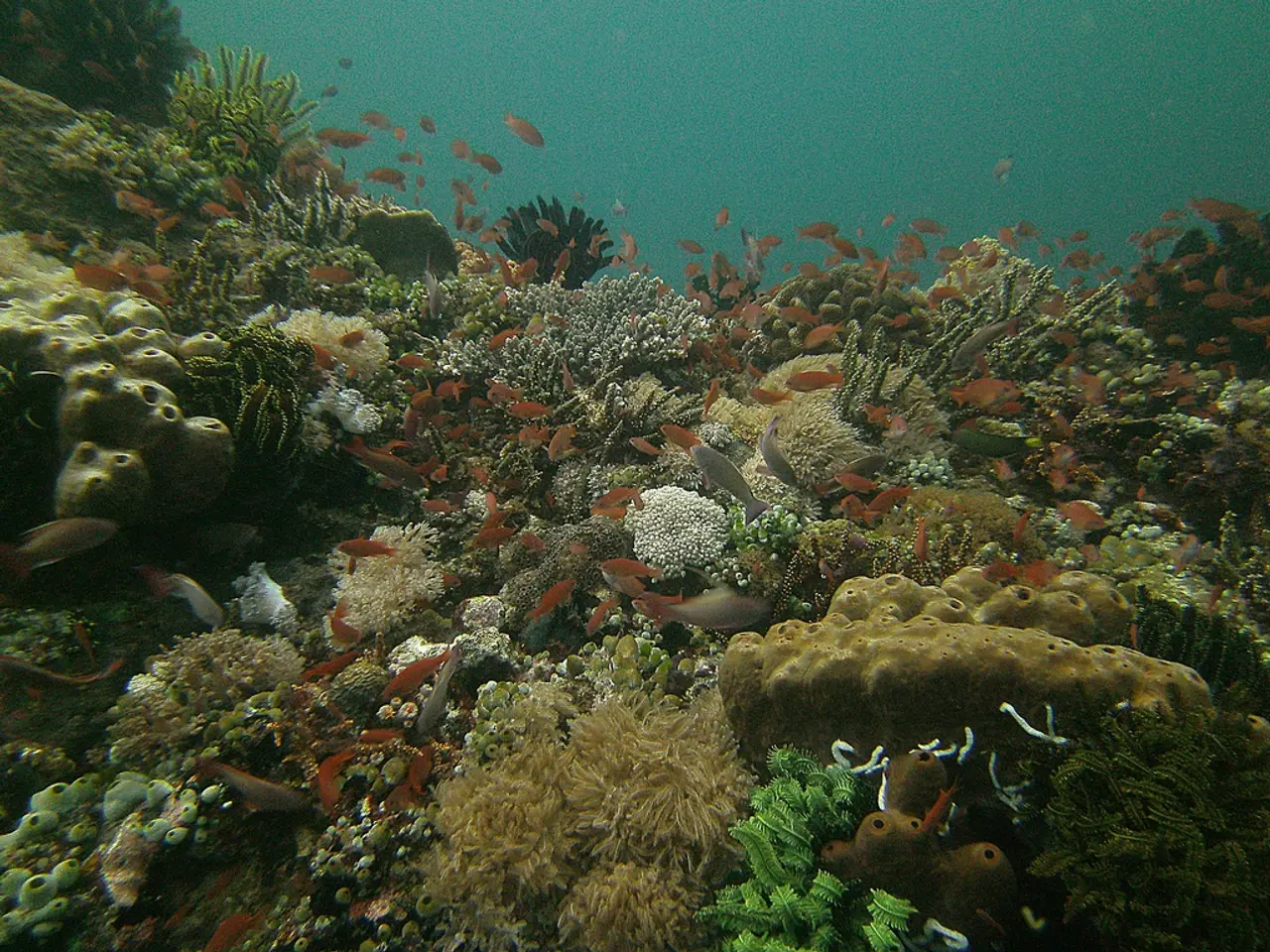Tracking Animals through Space: The SHARC Tagging Initiative
In a fascinating presentation to the Bristol Underwater Photography Group, Peter de Maagt, an accomplished underwater photographer and antenna specialist for the European Space Agency (ESA), shared insights into the ESA's groundbreaking work on satellite tagging marine species, particularly sharks.
The ESA's latest tagging technology, known as SHARC (Satellite - High Performance - Argos 3/-4 - Receive/Transmit Communication), boasts several key properties. These include smaller and lower weight, longer battery life, increased memory, and bi-directional communication with the satellite. This advancement aims to provide more accurate and detailed data on the movements and behaviours of marine species, contributing significantly to conservation efforts.
Peter de Maagt also discussed the challenges faced during the development of these tags. One such challenge was the need for a durable and waterproof housing that could withstand the harsh saltwater environment. The first attempt at a pressure of 130 bar cracked their prototypes, leading the team to develop a glass cannister that would break at a set pressure as an additional safety feature.
Another challenge was ensuring reliable data transmission from underwater and surfacing animals to satellites. To address this, the ESA's solution is to have the tags only send brief 'are you there?' messages until an acknowledgment from the satellite is received, and only then is all the data transmitted to mission control.
In addition to sharks, the chips used in these tags are also deployed on falcons, seals, turtles, polar bears, and albatrosses. The ESA is also working on a project to monitor marine litter using trackers attached to plastic debris.
The importance of marine conservation is a priority for the ESA, although they face numerous challenges. For instance, high costs limit tagging studies to commercially important or charismatic species. As of 2017, only 1,681 tags were deployed on 23 species.
Meanwhile, in a separate initiative, Saba has established a protected area where sharks thrive, providing a sanctuary for these majestic creatures. Sharks have been hard hit over the years, with an estimated 100,000,000 sharks having their fins cruelly amputated every year. This alarming statistic underscores the need for conservation efforts like those spearheaded by the ESA and initiatives like Saba's protected area.
During a field study near Saba, each biologist on the boat had a specific task, and the satellite tag was attached to sharks after collecting data. The sharks showed no aggression during the study but quickly moved away from the boat.
The computer chip used in the ESA tags is now readily available from a Belgium-based company, making this technology more accessible for future conservation projects. As we continue to learn more about these magnificent creatures and the challenges they face, it's clear that innovative solutions like those developed by the ESA are crucial in our quest to protect and conserve our oceans and their inhabitants.
- Peter de Maagt, during a presentation to the Bristol Underwater Photography Group, highlighted the ESA's work on satellite tagging marine species, particularly sharks, using the SHARC technology.
- The SHARC technology, with its smaller size, longer battery life, increased memory, and bi-directional communication, aims to provide more accurate data on marine species' movements and behaviors.
- De Maagt discussed the challenges faced during the development of these tags, such as creating a waterproof housing that can withstand harsh saltwater conditions.
- The ESA's solution to ensuring reliable data transmission from underwater animals is to have the tags send brief messages until an acknowledgment from the satellite is received.
- Besides sharks, the tags are also used on various other marine animals like falcons, seals, turtles, polar bears, and albatrosses, and are even employed in a project to monitor marine litter.
- Innovative solutions like the ESA's tagging technology are crucial for marine conservation, given the numerous challenges faced, including high costs, and the alarming rate of shark endangerment by finning.




